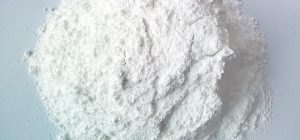
Calcium carbonate is an inorganic filler. When choosing a calcium carbonate product suitable for your own particle size, one must consider the particle size of the particle itself and the proportion of particles within 2 microns under the test conditions. From the perspective of practical application, it is necessary to consider the existence of these particles, whether they are agglomerated together, and whether the agglomerates can be dispersed during the processing of the filling system. The finer the powder, the higher the degree of agglomeration.
1. In terms of cost, as long as the calcium carbonate meets the customer’s requirements, it is better to use coarse and suitable calcium carbonate than fine calcium carbonate. For example, the heavy calcium carbonate used in the production of flat yarn for polypropylene woven bags can only use calcium carbonate with a particle size of 400 mesh. At the same time, since the finer calcium carbonate has higher oil absorption value, more additives and carrier resins will be consumed, which is not worth the candle.
2. Considering the performance of filled plastics, on the premise that the cost can be increased appropriately, the finer the particle size of calcium carbonate, the better the effect.
3. From the perspective of processing fluidity, under the premise of controlling the average particle size, the smaller the maximum particle size, the more uniform the particle size. For calcium carbonate products with the same fineness, the particle size distribution may vary widely, which can be reflected from the average particle size. For plastic products that require better processing fluidity (such as injection molding products, cast PE films, etc.) and Calcium carbonate whose average particle size is too small cannot be used. If possible, it is best to separate the small particle size under the premise of controlling the maximum particle size. This is because the more particles with small particle sizes, the poorer the processing fluidity of the filling system.
The particle size distribution of calcium carbonate has a great influence on the production of filler masterbatch, and also has a great influence on the production cost and the application performance of filler masterbatch:
1. The influence on the oil absorption value. The fineness of calcium carbonate is high, its specific surface area is large, and the oil absorption value will increase accordingly. When the oil absorption value is high, the light absorption of the filler masterbatch will increase, and the surface of the product will show a matte or matte effect. The lower the oil absorption value, the lower the light absorption, and the surface of the product will show a bright effect.
Second, the impact on the dispersion of calcium carbonate. Calcium carbonate with high fineness can be evenly distributed in the filler masterbatch, and the dispersibility is better, so that the color uniformity of the filler masterbatch, the strength, toughness, fatigue resistance and other comprehensive mechanical properties of the filler masterbatch are all improved.
Third, the impact on the production of filler masterbatch. The fineness of calcium carbonate is high, and the coefficient of friction in the production and granulation process of the filler masterbatch will be small, which makes the granulation ability of the filler masterbatch strong, and at the same time, the surface of the filler masterbatch product is smooth, and the molding ability will also be strengthened. However, due to the adsorption force between molecules, high-fineness calcium carbonate is prone to agglomeration, which will reduce the uniformity and comprehensive mechanical properties of calcium carbonate.
